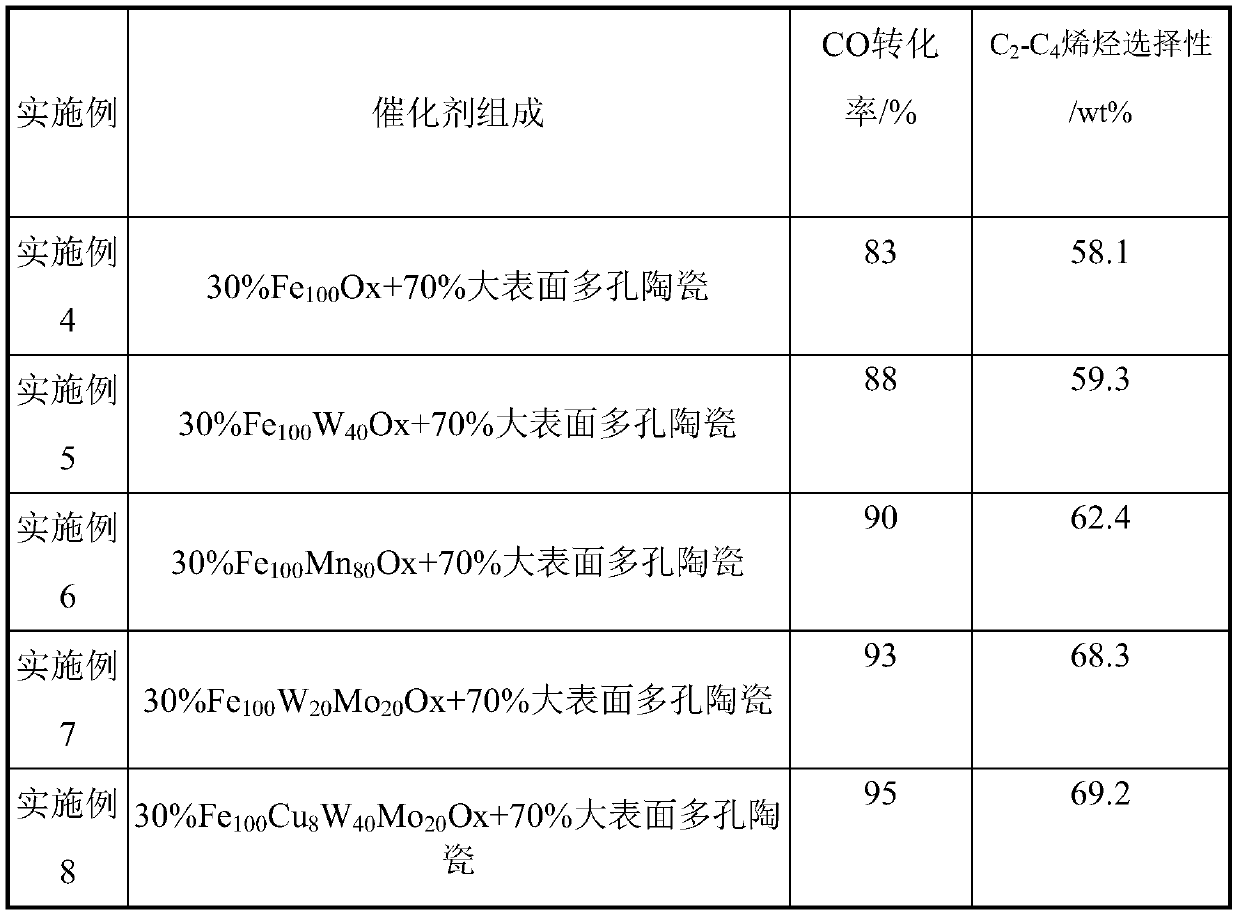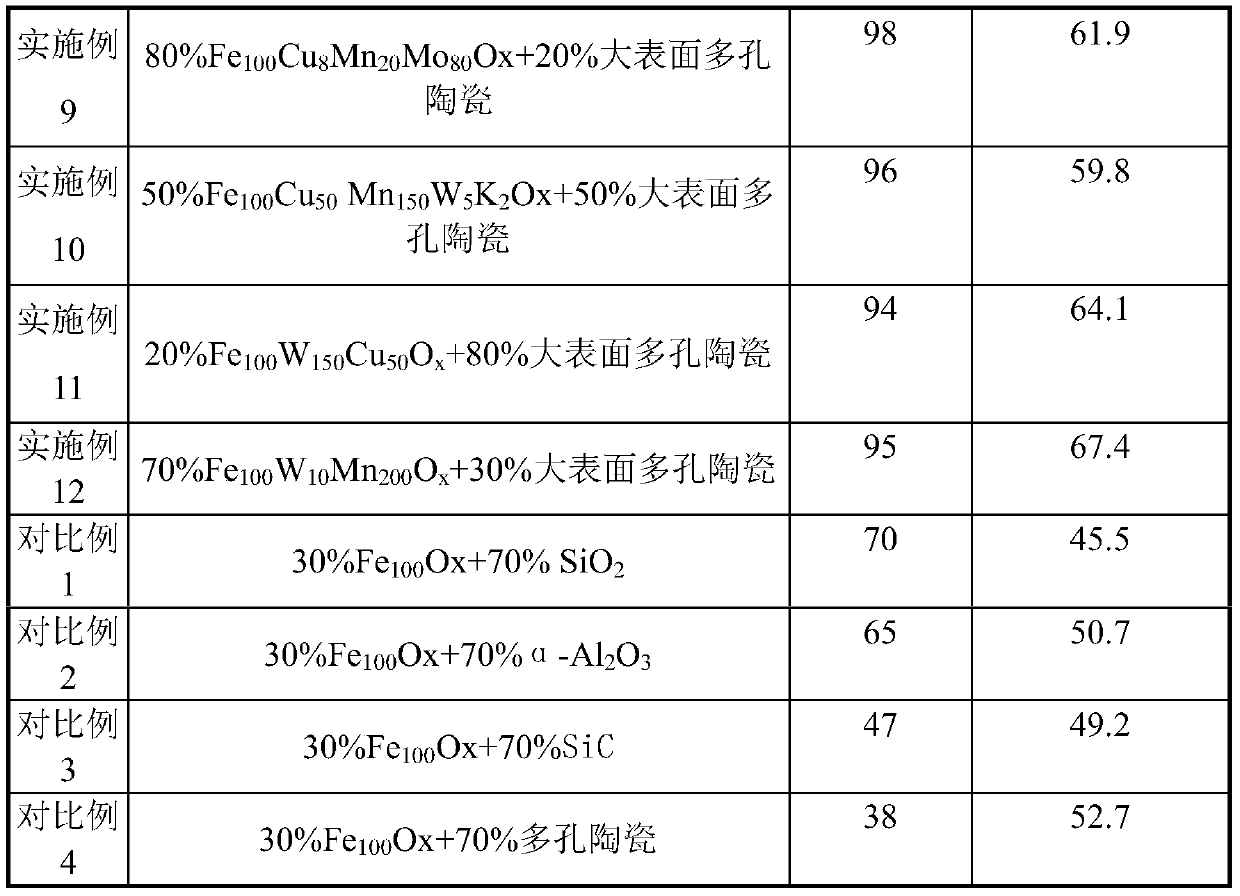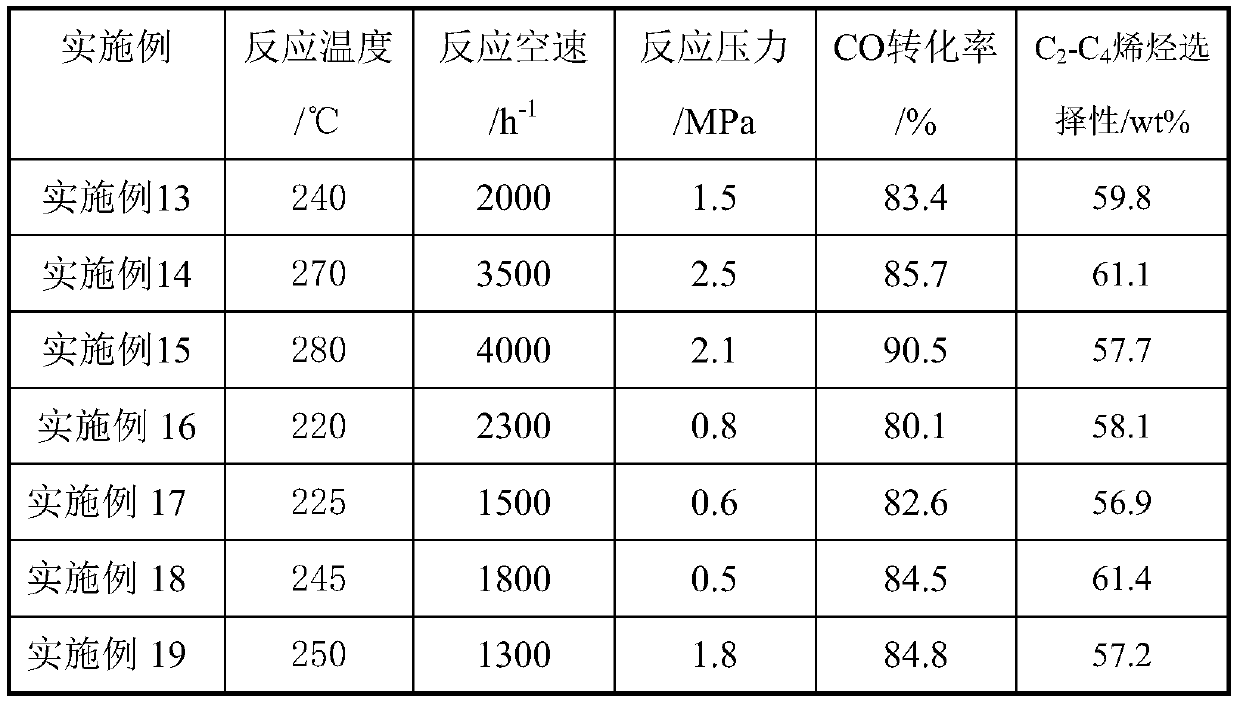Porous ceramic supported iron-based Fischer-Tropsch catalyst and method of use thereof
A technology of porous ceramics and catalysts, applied in the field of porous ceramics-supported iron-based Fischer-Tropsch catalysts, can solve the problems of low activity and selectivity at low temperatures
- Summary
- Abstract
- Description
- Claims
- Application Information
AI Technical Summary
Problems solved by technology
Method used
Image
Examples
Embodiment 1
[0049] Weigh 30 grams of methylamine, 70 grams of propylamine and 200 grams of deionized water, mix them into a solution and add them to the reactor, then weigh 100 grams of porous ceramics containing 0.25% iron oxide and 0.25% zinc oxide, add them to the reactor, seal Raise the temperature to 160°C, react for 24 hours, then cool down to room temperature, filter the solid, dry at 100°C for 5 hours, and then bake at 400°C for 12 hours.
Embodiment 2
[0051] Weigh 200 grams of ethylenediamine and 100 grams of deionized water, mix them into a solution and add them to the reaction kettle, then weigh 10 grams of porous ceramics containing 15% iron oxide, add them to the reaction kettle, seal and heat up to 170°C, and react for 12 hours After cooling down to room temperature, the solid was filtered and dried at 80°C for 24 hours, and then calcined at 500°C for 8 hours.
Embodiment 3
[0053] Weigh 30 grams of ethylamine, 77 grams of butylamine, 170 grams of triethylamine and 23 grams of deionized water, mix them into a solution and add them to the reaction kettle, then weigh 6 grams of porous ceramics containing 0.6% cobalt oxide and 2.4% nickel oxide , added to the reaction kettle, sealed and heated to 250°C, reacted for 72 hours and then lowered to room temperature, filtered the solid and dried at 120°C for 2 hours, and then roasted at 800°C for 1 hour.
PUM
| Property | Measurement | Unit |
|---|---|---|
| specific surface area | aaaaa | aaaaa |
| specific surface area | aaaaa | aaaaa |
| specific surface area | aaaaa | aaaaa |
Abstract
Description
Claims
Application Information
 Login to View More
Login to View More - R&D
- Intellectual Property
- Life Sciences
- Materials
- Tech Scout
- Unparalleled Data Quality
- Higher Quality Content
- 60% Fewer Hallucinations
Browse by: Latest US Patents, China's latest patents, Technical Efficacy Thesaurus, Application Domain, Technology Topic, Popular Technical Reports.
© 2025 PatSnap. All rights reserved.Legal|Privacy policy|Modern Slavery Act Transparency Statement|Sitemap|About US| Contact US: help@patsnap.com



